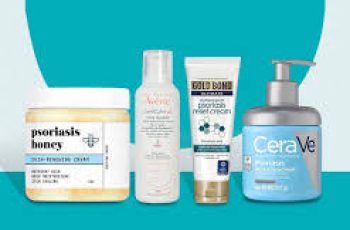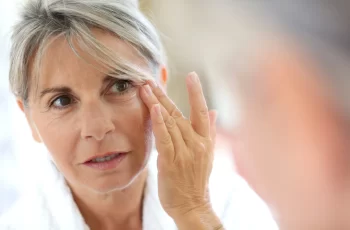Can Niacinamide and Glycolic Acid Be Used Together?
There is a lot of noise out there about the use of different skincare ingredients, and it can be deafening at times. With promises of transparency and skin issues disappearing overnight, I wouldn’t be surprised if you threw caution to the wind and coated your skin with every product in your bedroom closet. This could cause you some problems, especially if those products contain active amounts of glycolic acid and niacinamide.
Both niacinamide and glycolic acid can have similar effects on the skin. Both improve skin texture, prevent breakouts like acne, reduce signs of aging like fine lines and wrinkles, and target areas of hyperpigmentation.
While it may seem like a good idea to use niacinamide over glycolic acid, there is one important aspect of skin care that you should always keep in mind. What I mean by this is that every product formula has a different pH level. While it may not seem important, an unbalanced pH level is often the cause of skin irritation, redness, and dryness. Different pH levels mean that the time it takes for each ingredient to absorb into the skin can vary. Sometimes it can take a few seconds, a few minutes, or even up to 30 minutes. An easy way to remember how long it takes is this: the higher the pH level, the longer it will take to absorb into the skin. Since niacinamide has a higher pH than glycolic acid, it takes longer to be absorbed into the skin, and even then, it doesn’t penetrate as deeply as glycolic acid.
If you’re still a little confused about how these ingredients work together, I’ll now answer some of the most common questions about using niacinamide and glycolic acid together.
Can I mix glycolic acid and niacinamide?
Yes, you can, but make sure you use them correctly. What I mean by this is that you should allow enough time between applying each ingredient to avoid irritation. As I mentioned before, niacinamide has a higher pH than glycolic acid and is more alkaline. Therefore, it is recommended to avoid using them simultaneously. So, for the best results, apply glycolic acid first and wait a few minutes before applying niacinamide to your face.
If you want to know more about how to mix niacinamide and glycolic acid, read our dedicated blog post.
How to Use Niacinamide and Glycolic Acid?
In order to effectively use niacinamide and glycolic acid together, you must allow enough time between applications. This not only allows the ingredients to absorb into the skin, but also allows enough time to ensure that you avoid any potential irritation. The order in which you apply your skincare products is also an important factor when using niacinamide and glycolic acid. As you probably already know, to reap the benefits and form an effective habit, you need to apply products from thinnest to thickest consistency. This means applying glycolic acid to your skin before niacinamide, as this acid is often found in products like exfoliating toners, whereas niacinamide is found in more serums and moisturizers.
What Not to Mix with Niacinamide?
Despite the fact that niacinamide is extremely moisturizing, there are some active ingredients you’ll find that you should avoid in your skincare routine. For more information, see our dedicated blog post on what not to mix with niacinamide.
What Does Glycolic Acid Pair Best With?
There are some ingredients that can be combined with glycolic acid. However, before I tell you some of the most effective combinations, check with your doctor or dermatologist to make sure the ingredients you’re putting into your skin won’t cause irritation or redness.
Glycolic and Salicylic Acid
This powerful combination of BHA and AHA is perfect for those with oily skin that’s prone to breakouts. Each acid works on a different layer of the skin, helping to clean clogged pores while removing the layer of dead skin cells on the outer surface. Together, these chemical peels can clear your skin of acne-causing impurities and give you an all-around healthy complexion.
Glycolic and Lactic Acid
Although glycolic and lactic acids belong to the same AHA family due to their different molecular sizes, they work on different areas of the skin. Lactic acid’s larger molecular size means it works on the outer surface, while glycolic acid can penetrate deeper into the skin to remove excess oil, bacteria, and impurities underneath.
Glycolic and Hyaluronic Acid
Hyaluronic acid is one of those rare ingredients that works well for all skin types. It can increase hydration by binding water to your face using its humectant properties, ensuring continuous hydration. This makes hyaluronic acid an ideal partner for glycolic acid, as it can eliminate signs of irritation or dryness that may occur when using a stronger AHA.
Here are some prime examples of ingredients that work well with glycolic acid. However, before applying any product to your skin, I recommend doing a 24 patch test on the inside of your forearm before applying to your face.
Can Niacinamide be used with AHA BHAs?
Yes, but be careful. As I mentioned before, the pH of a skincare formula plays a big role in how it reacts to the skin. The high alkaline content of niacinamide means that it takes longer to be absorbed compared to stronger acidic AHAs like glycolic acid, lactic acid, and BHAs like salicylic acid.
Can I use glycolic acid every day?
Actually yes, you can use glycolic acid every day if your skin has developed enough tolerance and is comfortable with daily use. People with normal, combination, or oily skin can benefit most from the exfoliating effects of glycolic acid. If your skin is prone to dryness, it’s best to avoid glycolic acid and opt for lactic acid or PHAs instead, as they are gentler on the skin.
Can I use a moisturizer after glycolic acid?
Of course, using a glycolic acid moisturizer can combat dryness while creating a protective barrier on the skin. This physical barrier on the outer surface of the skin prevents environmental influences from damaging or unbalancing the protective barrier.
With any luck, I’ve cleared up some of the confusion about using niacinamide and glycolic acid together now, but if you have any questions, follow us on Instagram .
DQH Knowledge drop: In your 20s, your skin cell turnover decreases. (Cell turnover is a key component in keeping your skin youthful.) You know what else slows down? Your collagen production. Starting in your 20s, collagen decreases by about 1 percent per year. Should you want to prevent fine lines and wrinkles, start by eliminating behaviors that contribute to premature aging. “If it’s bad for you, it’s bad for your skin,” says dermatologist Michel Somenek.
“Cigarette smoking reduces blood flow to the skin and causes premature wrinkling and a dull skin texture. Making the repeated pursed motion to inhale can also cause smoker’s lines. Alcohol and recreational drugs are toxins for the skin that damage its cellular structure and DNA,” Somenek tells us. “The faster you eliminate vices while you are young, the better chance your skin and body have to recuperate.” Also, adopting an anti-aging routine in your 20s is key. After all, the best offense is a good defense. We spoke to Somenek and experts Joshua Ross and Audrey Kunin to find out more.
Keep reading for the best anti-aging products for your 20s, according to skincare professionals.
Sunscreen
“We all know that the sun is the number one cause of skin aging and starting the prevention in your 20s is very important,” Ross says. “The majority of your sun damage won’t start to appear until you’re in your 30s, so don’t wait until you see it surface or you’ll be behind the curve. Stay ahead of it with a good-quality zinc-based sunscreen worn daily.”
Farmacy Green Defense Daily Mineral Sunscreen
An invisible sunscreen with SPF 30, plus botanical extracts meant to protect skin with tons of antioxidants. Bonus: It’s clean and fine to use under makeup.
Bareminerals Complexion Rescue™ Tinted Moisturizer Broad Spectrum SPF 30
Although we recommend you use your SPF and moisturizer separately, we also understand moments when you don’t have time or energy for that extra step. For those times, this bareMinerals moisturizer is a great thing to have on hand.
Vitamin C Serum
“A great introduction to anti-aging is to start with a vitamin C serum in your morning skincare routine,” Ross says. “It’s a powerful antioxidant that will neutralize free radicals and brighten the skin.” He adds that it’s a great way to counteract the effects of the sun’s harmful rays, which, as previously mentioned, are among the biggest causes of premature aging.
Drunk Elephant C-Firma™ Vitamin C Day Serum
The Drunk Elephant C-Firma is a lightweight serum that promises to give skin a glow by combining the brightening powers of vitamin C with ferulic acid, l-ascorbic acid, and vitamin E. The included sodium hyaluronate is meant to replace hydration loss, so you shouldn’t have to deal with any irritation.
Sunday Riley C.E.O. Rapid Flash Brightening Serum
This potent serum is jam-packed with vitamin C (15 percent, to be exact), which means it’s a potential superstar at both brightening skin and dousing it in antioxidants.
Peptides
Using peptides on your skin has many benefits, says Somenek. “The skin barrier is what defends the body against pollution, UV rays, bacteria, and toxins. It can be damaged by several everyday factors. Using topical peptides aids in building a stronger barrier,” he says. “Peptides comprise elastic fibers, which are a type of protein. These fibers help to make skin appear taut and firm. Peptides can also help repair damaged skin, relieve inflammation, and even out skin tone. Some peptides can kill acne-causing bacteria that is common in 20-somethings.”
Kunin agrees, saying, “Peptides are an excellent entry point for supporting collagen.” She recommends looking for face and eye treatments that contain these collagen-boosting powerhouses.
Charlotte Tilbury Magic Eye Rescue Cream
This Charlotte Tilbury super-emollient eye cream has a base of coconut oil and shea butter (read: it’s incredibly hydrating). Botanicals plus peptides are meant to help reduce dark circles and boost collagen, respectively.
This creamy moisturizer serves up potent collagen-boosting peptides and pycnogenol, and antioxidant-rich vitamin C. “Instead of sitting on top of the skin, peptides penetrate the outer layer so they go deep. The ‘signals’ they send tell the cells to produce elastin and collagen, which are needed for youthful-looking skin,” explains Somenek.
At-Home Peel Pads
Remember that skin cell turnover fiasco we talked about earlier? One way to help support it is by exfoliating. “Exfoliation is important to help keep skin fresh and luminous,” Kunin says. She recommends using at-home peel pads as an easy and effective way to exfoliate.
“The goal in your 20s is to fight the slowing pace of cell turnover. It is wise to use products that gently exfoliate, yet still remove oil and other impurities. Products that have Alpha Hydroxy Acids (AHA) or Beta Hydroxy Acids (BHA) are a good choice.”
According to Somenek, you should only exfoliate two to three times a week. “People of all ages are guilty of over-exfoliating and that can be too much of a good thing,” he says.
Dermadoctor Kakadu C Intensive Vitamin C Peel Pad
A few swipes of this Derma Doctor powerful peel pad promise to leave your skin glowing and smooth, thanks to the seven (yes, seven) types of chemical exfoliants, including AHA and BHA. It also contains vitamin C via Kakadu plum extract for added brightening and antioxidant protection.
KEY INGREDIENTS Kakadu plum extract is sourced from the Kakadu plum, a fruit grown in northern Australia. It contains vitamin C, which restores the skin’s natural barrier, increases collagen production, and soothes irritation.
Dr. Dennis Gross Skincare Alpha Beta® Universal Daily Peel Pads
These are the gold standard of peel pads, with a cult following and over 900 five-star reviews on Sephora. They’re easy to use and contain a blend of anti-aging exfoliating acids.
Emollient Night Cream
“In your 20s, you need to start upping the hydration in your skincare routine. You may have been cautious of over-moisturizing because of acne in your teens, but as you enter your 20s, your skin transitions and becomes drier,” Ross says. “I recommend an emollient night cream added into your evening skincare regimen.”
“Twenty-somethings need to make sure that they are not using creams that will clog their pores and cause excess oil production,” says Somenek. Opt for non-comedogenic products.
Cerave Skin Renewing Night Cream
One great choice is the CeraVe Skin Renewing Night Cream, which is a non-comedogenic night cream that leaves skin soft and glowy. It combines the moisturizing powers of ceramides and hyaluronic acid.
RoC Retinol Correxion Max Hydration Creme
“The best night cream ingredients contain retinol, benzoyl peroxide, and/or salicylic acid or hyaluronic acid. The goal is to moisturize, yet remove excess oil,” says Somenek. This Roc Retinol Correxion cream fits the bill as it contains both hyaluronic acid and retinol so it promises to moisturize while also being non-comedogenic.



